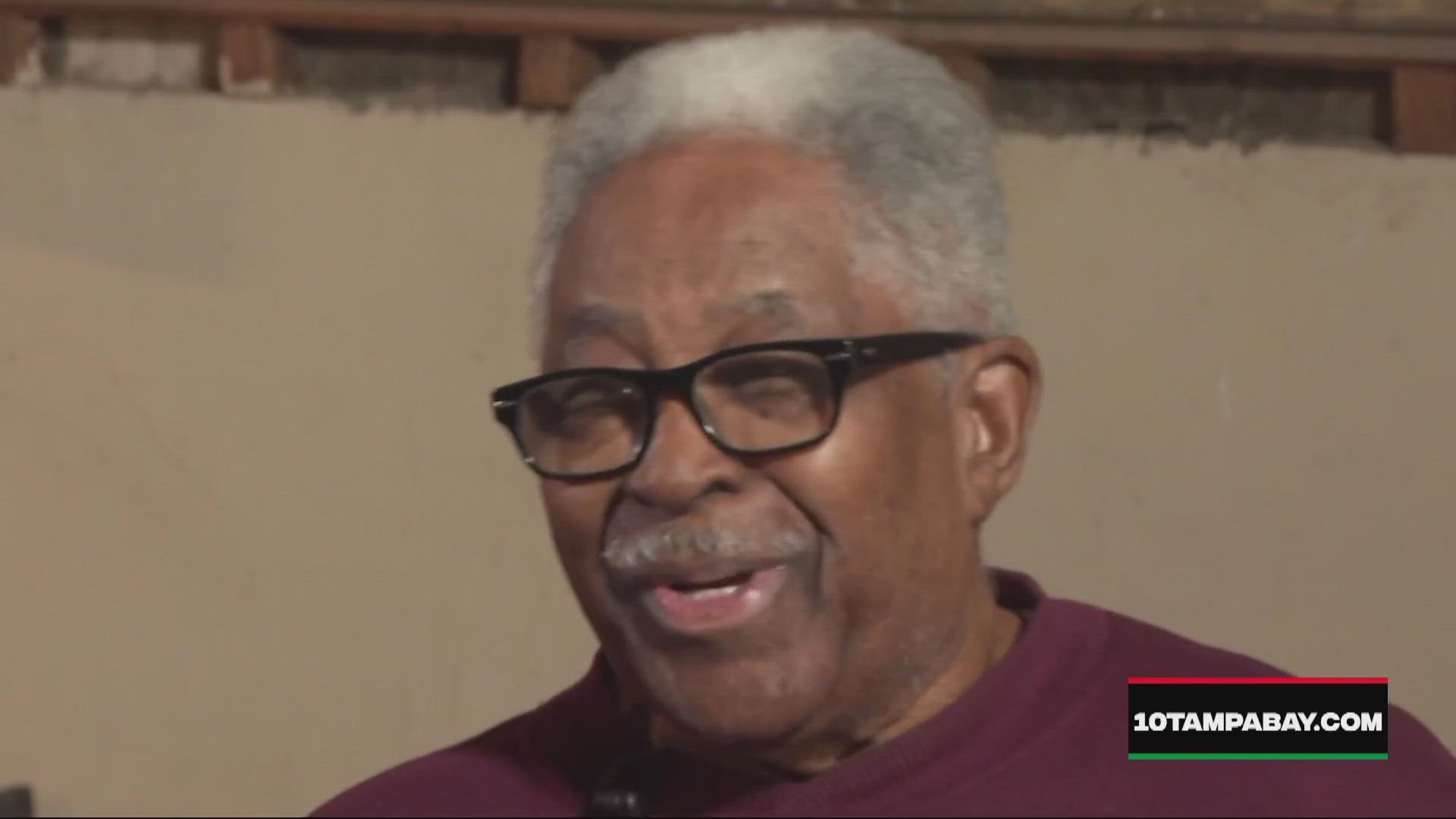TAMPA, Fla. — The fact of the matter is simple: You cannot talk about civil rights in Tampa, without talking about the F.W. Woolworth lunch counter sit-ins.
It was a turning point for Tampa and was led by a young man named Clarence Fort, who rallied other young people to take action and fight to integrate Tampa’s lunch counters.
Today, many pass the building on the corner of North Franklin Street and East Polk Street in downtown Tampa without much thought. There are chains on the doors keeping out trespassers and giant windows covered in dust.
Peer inside and you’ll see construction debris — the skeleton of a building. Look closer and you’ll see the hints of history, traces of decades past.
There’s a historical marker that shares the story commemorating the “Woolworth Sit-in.” It shares the names of Clarence Fort, the Reverend A. Leon Lowry and roughly 40 students from George S. Middleton and Howard W. Blake high schools who participated in changing Tampa and how they did it.
It’s been decades since some of those students, now in their 70s or 80s, have been inside.
Almost 63 years later, Fort and Arthenia Joyner joined 10 Tampa Bay anchor Courtney Robinson, inside the former F.W. Woolworth store to share their story and encourage those who continue the fight for equality.
Inside, the backsplash from the lunch counter and its mirrors are still intact. Some are scrawled with graffiti. Joyner and Fort took their seats in right about the same place they sat on Feb. 29, 1960, when they marched through Tampa, into the F.W. Woolworth store and took a seat at the lunch counter where only white people could sit and be served.
"We knew that we couldn’t, but we decided that we would," Joyner said.
She was a Middleton High School student back then. Fort was 20 years old and the president of the NAACP Youth Council.
"Once we got on here, I took the first seat and rest of them filled in around me," Fort said. "Most of them didn't even have money. We couldn't afford sandwiches even if they sold it to us, but they didn't know that. But it was amazing that first day."
That would be the first of five days of marching, sitting, being refused service and then leaving.
"Actually the second day, the mayor (then Mayor Julian B. Lane) sent the police department, about eight to 10 officers, and they stood behind us, and didn’t let anyone get to us. So, that was the difference between Tampa and other cities in the south," he said.
The sit-ins were peaceful in comparison, but they were not easy.
“I did have two white gentlemen come in — one of them spit on my shoulder,” he said.
After the fifth day, Lane called and asked for an end to negotiations. Fort and Joyner noted that they never did get served.
“It worked. It worked in Tampa. That’s when Reverend Lowry and the city fathers got together with Mayor Lane. They formed the biracial committee, and they sat down and worked it out,” Fort said.
The lunch counters in Tampa were integrated that September. Fort says he believes that was the turning point for Tampa.
“I think so. It got it started because it went from here to integrating the buses,” he said.
Fort continued the fight for integration. He went on to become the first Black bus driver for Trailways Bus Line in Florida.
“I’ve never stopped fighting,” Joyner said.
Joyner went on to become a student at Florida A&M University where in 1963 she was arrested for protesting segregated theaters and spent weeks in the Leon County Jail. She later took her fight to the floor of the Florida Senate and became State Sen. Arthenia Joyner.
Both say the fight for equality, whether racial or socio-economic or in education, is never over.
“You still have to challenge the status quo,” Joyner said. “Change does not occur if you become stagnant.”
The owner of the building, Carolyn Wilson, has plans to honor its historical significance in the fight for civil rights.
While the building is closed to the public, you can visit the historical marker outside and even see the tiled “W” that still marks the entryway to the building.

